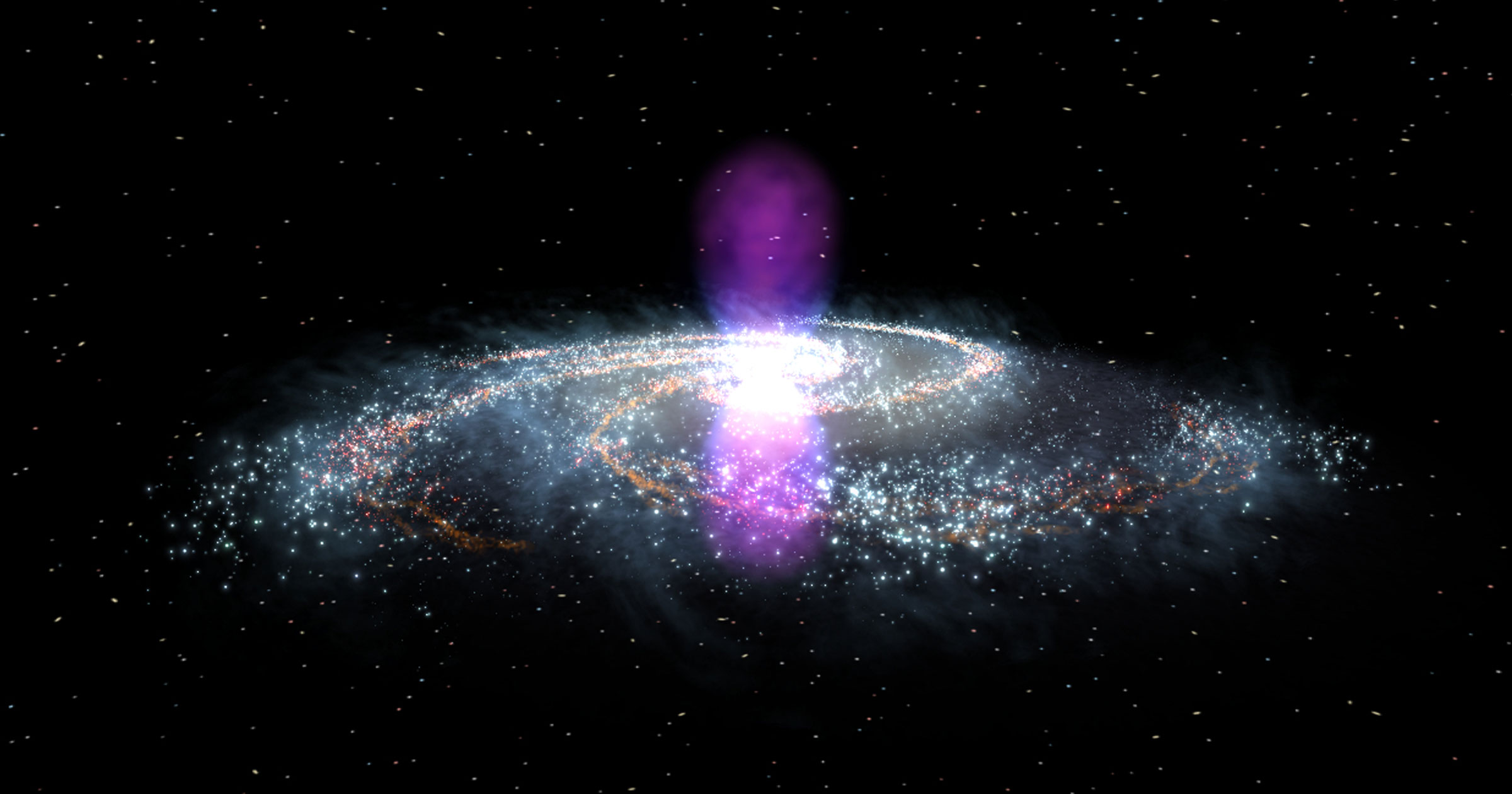Science
Astronomers Explore Gamma Ray Mystery at Milky Way’s Core

Astronomers are investigating a peculiar glow of gamma rays emerging from near the center of the Milky Way Galaxy. This phenomenon has sparked significant interest in the scientific community, as two primary theories attempt to explain its origin: one suggests it results from collisions between dark matter particles, while the other attributes the glow to pulsars, which are rapidly spinning neutron stars that are remnants of supernova explosions.
A recent study published in the journal Physical Review Letters contributes to the ongoing debate by asserting that both theories hold equal plausibility. The implications of this assertion are profound. If the gamma rays are indeed linked to dark matter, it could provide the first concrete evidence for this elusive substance, which is believed to constitute more than 26 percent of the universe.
According to Joseph Silk, a coauthor of the study and an astronomy professor at Johns Hopkins University, “Dark matter dominates the universe and holds galaxies together. It’s extremely consequential, and we’re desperately thinking all the time of ideas as to how we could detect it.” He further noted that the gamma rays observed at the galaxy’s center could serve as a significant clue in this search.
In their research, Silk and his international team constructed a dark matter map, aiming to identify its potential locations. They posit that billions of years ago, smaller galaxy-like systems of dark matter merged at the Milky Way’s core, resulting in increased collisions among these clumps. By simulating these interactions, the researchers found their dark matter map aligned with existing gamma ray maps derived from data collected by NASA’s Fermi Gamma-ray Space Telescope.
Despite this intriguing correlation, scientists emphasize that the origin of the glow remains uncertain. The possibility that pulsars could be responsible has not been ruled out. To further investigate this celestial mystery, the upcoming Cherenkov Telescope Array Observatory is expected to play a crucial role. This multinational project will feature 60 telescopes located in two regions: La Palma in Spain and the Atacama Desert in Chile, focusing on galactic sources of gamma rays.
Silk expressed optimism about the potential of this new telescope, stating, “A clean signal would be a smoking gun, in my opinion.” With higher-resolution images, researchers anticipate narrowing down the source of the enigmatic glow that has puzzled astronomers for decades.
In addition to studying the Milky Way, Silk and his colleagues plan to examine nearby dwarf galaxies to assess whether their dark matter distributions match existing gamma ray maps. “It’s possible we will see the new data and confirm one theory over the other,” he concluded. “Or maybe we’ll find nothing, in which case it’ll be an even greater mystery to resolve.”
As the exploration of dark matter continues, the scientific community remains eager for further discoveries that may illuminate our understanding of the universe.
-

 Science2 months ago
Science2 months agoInventor Achieves Breakthrough with 2 Billion FPS Laser Video
-

 Health2 months ago
Health2 months agoCommunity Unites for 7th Annual Into the Light Walk for Mental Health
-

 Top Stories2 months ago
Top Stories2 months agoCharlie Sheen’s New Romance: ‘Glowing’ with Younger Partner
-

 Entertainment2 months ago
Entertainment2 months agoDua Lipa Aces GCSE Spanish, Sparks Super Bowl Buzz with Fans
-

 Health2 months ago
Health2 months agoCurium Group, PeptiDream, and PDRadiopharma Launch Key Cancer Trial
-

 Top Stories2 months ago
Top Stories2 months agoFormer Mozilla CMO Launches AI-Driven Cannabis Cocktail Brand Fast
-

 Entertainment2 months ago
Entertainment2 months agoMother Fights to Reunite with Children After Kidnapping in New Drama
-

 World2 months ago
World2 months agoR&B Icon D’Angelo Dies at 51, Leaving Lasting Legacy
-

 World2 months ago
World2 months agoIsrael Reopens Rafah Crossing After Hostage Remains Returned
-

 Business2 months ago
Business2 months agoTyler Technologies Set to Reveal Q3 Earnings on October 22
-

 Health2 months ago
Health2 months agoNorth Carolina’s Biotech Boom: Billions in New Investments
-

 Entertainment2 months ago
Entertainment2 months agoRed Sox’s Bregman to Become Free Agent; Tigers Commit to Skubal









